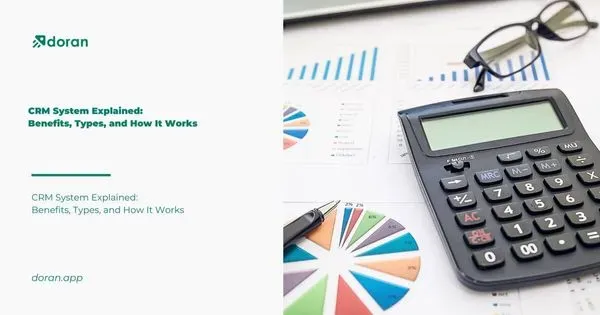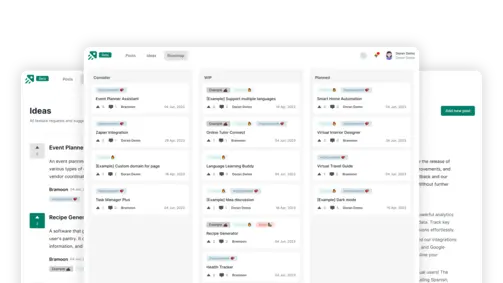SaaS Customer Journey Mapping - A How-To Guide
Create changelog and product roadmap for your product
Explore nowTable of contents 8 min
Understanding and mapping the SaaS customer journey is essential for optimizing user experience and driving customer satisfaction in the SaaS industry. In this guide, we will explore the steps and best practices to create effective customer journey maps for your SaaS product.
Understanding the Customer Journey in SaaS
Understanding the Customer Journey in SaaS is essential for businesses aiming to optimize their customer experience. By creating a comprehensive SaaS customer journey map, businesses can gain valuable insights into customer interactions, pain points, and opportunities for improvement throughout their journey with the SaaS product.
Defining the Stages and Touchpoints of the SaaS Customer Journey
To effectively understand the customer journey in the SaaS industry, it is crucial to define the various stages and touchpoints that customers go through during their interaction with your product:

Mastering SaaS customer journey mapping is key to delivering exceptional user experiences
-
Awareness: This is the initial stage where customers become aware of your SaaS product. It includes touchpoints such as social media, online advertisements, or content marketing that grab their attention and introduce them to your offering.
-
Consideration: In this stage, customers evaluate your SaaS product alongside competitors. Touchpoints may include website visits, product demos, or comparisons to understand its features, benefits, and suitability for their specific needs.
-
Conversion: The conversion stage marks the point where customers make the decision to become paying customers. This often involves touchpoints like signing up for a free trial, subscribing to a pricing plan, or completing a purchase.
-
Onboarding: Once customers have converted, the onboarding stage focuses on providing a smooth and seamless experience as they start using your SaaS product. Onboarding touchpoints may include user guides, tutorials, or personalized support to help customers get started.
-
Adoption: In this stage, customers actively use and engage with your SaaS product. Touchpoints include features like product updates, customer support, or community forums that help customers fully utilize the product and maximize its value.
-
Expansion: The expansion stage focuses on encouraging customers to expand their usage or upgrade their subscription. Touchpoints may include upselling opportunities, add-on features, or personalized recommendations based on their usage patterns.
-
Advocacy: Customers who have had a positive experience with your SaaS product may become advocates and promote it to others. Touchpoints in this stage include referrals, testimonials, or social media shares that amplify positive word-of-mouth and attract new customers. Suggested Post: The Ultimate Guide to SaaS Product Roadmap for Founders
Identifying Key Customer Personas and Their Unique Journeys
To gain a deeper understanding of the customer journey, it is essential to identify key customer personas and their unique experiences:

Creating a customer journey map for your SaaS product allows you to understand the entire customer experience.
-
Target Customer Segments: Identify and segment your customer base based on demographic, psychographic, or behavioral factors. This helps create customer personas that represent specific groups with distinct needs and preferences.
-
Persona Journey Mapping: Map out the customer journey for each persona, identifying their motivations, pain points, and interactions at each stage. This provides insights into the unique challenges and opportunities that arise for different customer segments.
Analyzing Customer Behaviors, Needs, and Pain Points at Each Stage
Understanding customer behaviors, needs, and pain points at each stage of the journey is critical for delivering a tailored and exceptional customer experience:
-
Data Analysis: Analyze customer data, such as usage patterns, feedback, and support interactions, to gain insights into their behaviors and preferences. This data-driven approach helps identify trends and areas for improvement.
-
Customer Feedback: Gather feedback through surveys, interviews, or user testing to understand customer needs and pain points at each stage. This qualitative feedback provides valuable insights into enhancing the customer journey. By comprehensively defining the stages and touchpoints of the customer journey, identifying key customer personas, and analyzing customer behaviors and needs, SaaS businesses can gain a deep understanding of their customers. This understanding enables them to tailor their strategies, optimize the customer experience, and foster long-term customer satisfaction and loyalty.
Steps to Create a Customer Journey Map for SaaS
Creating a customer journey map for your SaaS product allows you to visualize and understand the entire customer experience. By following these steps, you can effectively map out the stages, touchpoints, emotions, and pain points in the customer journey, enabling you to enhance the overall customer experience and drive business success.
Gather Data and Insights about Customer Experiences
The first step in creating a customer journey map for your SaaS product is to gather relevant data and insights about customer experiences. This information will provide the foundation for understanding your customers’ interactions and perceptions at various touchpoints throughout their journey. Here’s how you can gather the necessary data:
-
Data Collection: Collect data from various sources, such as customer surveys, feedback forms, support tickets, website analytics, and product usage data. This data will help you understand customer behavior, preferences, and pain points.
-
Customer Interviews: Conduct interviews with a sample of your customers to gain qualitative insights into their experiences. Ask open-ended questions to uncover their motivations, challenges, and expectations at different stages of their journey.
-
Social Listening: Monitor social media platforms, online forums, and review sites to gather real-time feedback and insights from customers. This can provide valuable information about their sentiments, opinions, and experiences with your SaaS product.

It’s essential to identify customer behaviors may have at each stage of their journey
Visualize and Map out the Customer Journey Stages
Once you have gathered the necessary data, it’s time to visualize and map out the customer journey stages. This step helps you understand the overall flow of the customer experience and identify key touchpoints along the way. Here’s what you should do:
-
Define the Stages: Identify the key stages of the customer journey based on your SaaS product’s specific context. Common stages include awareness, consideration, onboarding, adoption, and advocacy. Customize the stages to reflect the unique customer journey for your SaaS product.
-
Plot Touchpoints: Map out the touchpoints where customers interact with your SaaS product at each stage. These touchpoints can include website visits, email communications, product demos, customer support interactions, and more. Visualize these touchpoints in a timeline or flowchart format.
Identify Customer Emotions, Motivations, and Expectations at Each Stage
To create an effective customer journey map, it’s essential to identify the emotions, motivations, and expectations that customers may have at each stage of their journey. This step helps you understand their mindset and align your strategies accordingly. Here’s what you should consider:
-
Emotional State: Identify the typical emotions customers may experience at each stage. For example, during the consideration stage, they may feel uncertain or overwhelmed, while in the adoption stage, they may feel excited or hopeful.
-
Motivations: Understand the motivations that drive customers at each stage. For instance, during the awareness stage, customers may be motivated by a desire to solve a problem, while during the adoption stage, they may be motivated by the need for efficiency or productivity.
-
Expectations: Determine the expectations customers have at each stage regarding the value they expect to receive, the level of support they anticipate, and the overall experience they desire. This will help you align your strategies to meet or exceed those expectations.
Identify Pain Points and Areas for Improvement in the Customer Journey
The final step in creating a customer journey map is to identify pain points and areas for improvement in the customer journey. This step helps you pinpoint the areas where customers may encounter difficulties or frustrations and allows you to prioritize improvements. Here’s how to approach it:
-
Pain Points: Identify the pain points customers may experience at each stage. These can include challenges, frustrations, or obstacles that hinder their progress or impact their overall satisfaction. Pinpoint pain points based on customer feedback, data analysis, and common issues reported.
-
Areas for Improvement: Analyze the pain points and identify the areas where improvements can be made. Consider how you can enhance the customer experience, streamline processes, provide better support, or offer additional value. Prioritize these areas based on their impact on the overall customer journey. By following these steps to create a customer journey map for your SaaS product, you can gain valuable insights into your customers’ experiences, emotions, motivations, and expectations. This understanding will enable you to optimize the customer journey, enhance customer satisfaction, and drive long-term success for your SaaS business.
Conclusion
Mastering the art of SaaS customer journey mapping is key to delivering exceptional user experiences and fostering long-term customer loyalty. By analyzing touchpoints, identifying pain points, and making data-driven improvements, you can enhance the customer journey and ensure your SaaS product meets the evolving needs of your users throughout their engagement with your brand.
What to not miss out on our blog
Gain insightful knowledge and invaluable experiences from dedicated experts.

CRM System Explained: Benefits, Types, and How It Works
Discover everything about CRM system. Learn the benefits and how a CRM system works to improve customer relationships and streamline business operations.

Are you ready? Start your free trial today.
Enhance communication, keep track of the progress, understand customers' insight and more by taking your first trial on Doran.
Sign up for free


